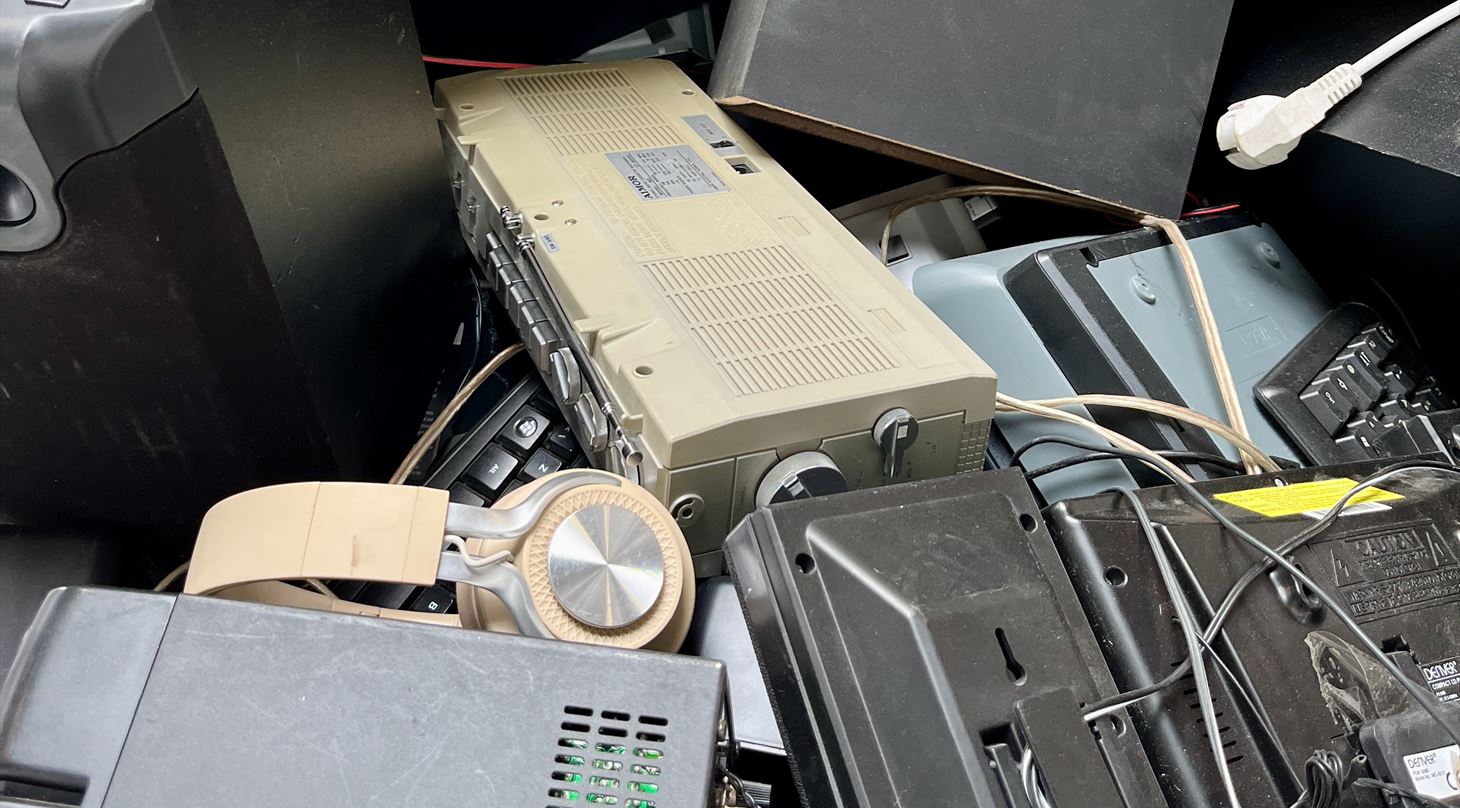
New life for critical metals in electronic waste
International partnership aims to recycle rare earths in consumer electronics and strengthen European security of supply
A new partnership will pave the way for a near future where the rare earth element neodymium in scrapped consumer electronics is recycled instead of going to waste. The REECirkEL partnership represents an important step towards the EU's ambitious target of 25 percent rare earth materials recycling by 2030.
Vanishes in the scrap heap
Today, less than one percent of the rare earth elements in electronic waste is recycled, even though they are crucial for future green technologies. According to the UN, around 7,200 tonnes of rare earths are lost every year worldwide when electronics are discarded. Until now, there has been a lack of both technology and financial incentives to extract these valuable materials.
- Now we are demonstrating new ways to collect, sort and process consumer electronics to lay the foundation for a new European neodymium supply chain. We don't have critical metals in our underground, but they are right under our noses in electronic waste. That's why the partnership makes so much sense," says Project Manager Aisha Rafique from the Danish Technological Institute.
Neodymium is a critical raw material in the rare earth group and is especially known for its role in the production of magnets. It is used in speakers, headphones, hard drives, electric motors for wind turbines and electric cars, and medical equipment such as MRI scanners.
From waste to resource - a complete cycle
A number of different actors must work together if neodymium is to be recyclable in the future. The Danish Technological Institute has brought them together in the REECirkEL partnership. The partners include HJHansen Recycling and Electronic Reuse & Recycling (ERR), who collect and sort electronic waste at recycling centres, ELDAN Recycling, who are responsible for shredding, Belgian JGI-Hydrometal and Norwegian REEtec, who perform chemical purification of used neodymium, and Bang & Olufsen as producers, who use neodymium in speakers and headphones.
A key player in REECirkEL is Electronic Reuse & Recycling. Their new sorting facility in Nørre Aaby near Middelbart, Denmark is the first stop for electronic waste collected at recycling centres.
- The goal is for more electronics products from recycling centres to be re-used as they are. And for those that can't be saved, we can hopefully get more critical metals out," says Mette Lorentzen, CEO of Electronic Reuse and Recycling.
Technological breakthrough for specialised machines
One of the challenges of rare earth materials in consumer electronics is that they occur in very small quantities. The recycling company ELDAN Recycling will develop machines that are suitable for just that.
- Our machines can shred electronics and sort high-purity fractions such as copper and aluminium. In REECirkEL, we will develop the next generation of shredders that can extract rare earth elements found in electronics," says Flemming Hansen, Product Manager at Eldan Recycling.
For Bang & Olufsen, it's important that their electronic products are designed so that parts with neodymium are easy to identify and recycle.
- As an electronics manufacturer, we have a responsibility to consider the entire product lifecycle in the design phase. Our participation in REECirkEL helps us understand how we can design products that are easier to recycle when they reach the end of their life," says Mads Kogsgaard Hansen, Head of Product Circularity at Bang & Olufsen.
EU ambitions and security of supply
The REECirkEL project launches at a strategically important time when the EU has set ambitious targets for the recycling of critical raw materials. In 2023, 94 per cent of rare earth materials used in the production of electronics in Europe were imported from three countries outside the EU (Russia, China and Malaysia). Increasing the recyclability of the materials will thus strengthen the security of supply.
The EU's Critical Raw Materials Act of 2024 has set a target of 25 per cent recycling of rare earths by 2030, creating a strong incentive to develop circular solutions.
- By establishing this value chain, Denmark can become a frontrunner for all of Europe. We are not only developing technology for neodymium recycling but creating a model that can be transferred to other critical raw materials as well. This will both strengthen European security of supply and create the basis for climate-positive employment," concludes Aisha Rafique.
Facts about rare earth elements
Rare Earth Elements (REE) consists of 17 different elements that were classified as critical raw materials in the EU in 2011. Neodymium (Nd) and dysprosium (Dy) are particularly important for the efficiency of the permanent magnets found in electric car motors and wind turbines, but also in speakers and headphones. Overall, rare earths make up 97 percent of the non-recycled critical materials in electronic products, of which neodymium makes up 60 percent.
REECirkEL (2025-27) is a partnership between electronics manufacturer Bang & Olufsen, technology developer ELDAN Recycling, waste management companies HJHansen Recycling and Electronic Reuse and Recycling, and chemical processing companies JGI-Hydrometal and REEtec. The Danish Technological Institute is project manager and knowledge partner. The partnership is supported by the Environmental Technology Development and Demonstration Programme (MUDP) under the Ministry of Environment and Gender Equality.
Sources:
Eurostat: Trade in rare earth elements decreased in 2023
https://ec.europa.eu/eurostat/web/products-eurostat-news/w/ddn-20241112-1
The Global E-waste Monitor 2024
https://ewastemonitor.info/wp-content/uploads/2024/03/GEM_2024_18-03_web_page_per_page_web.pdf
Contact information
Aisha Rafique
Project Manager, PhD.
Danish Technological Institute
Mobile: +45 72 20 23 36
E-mail: araf@teknologisk.dk